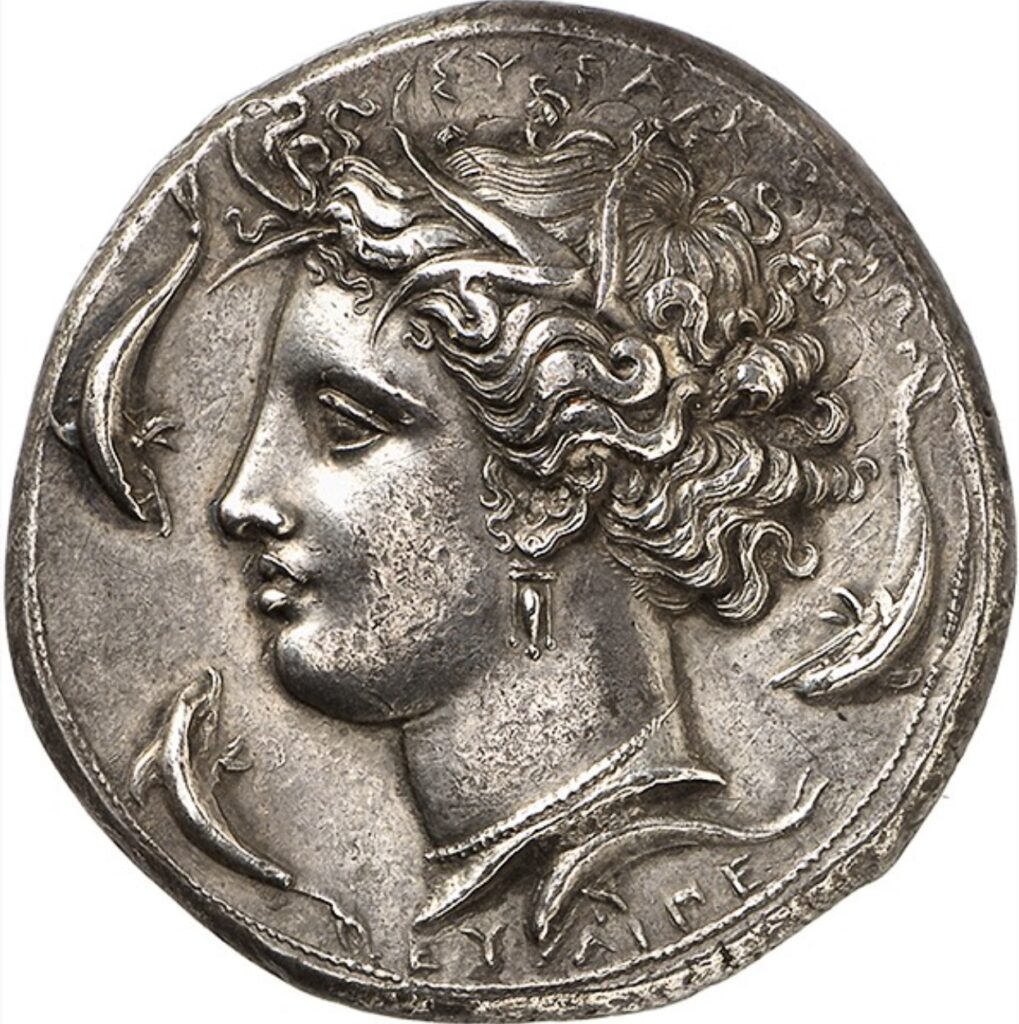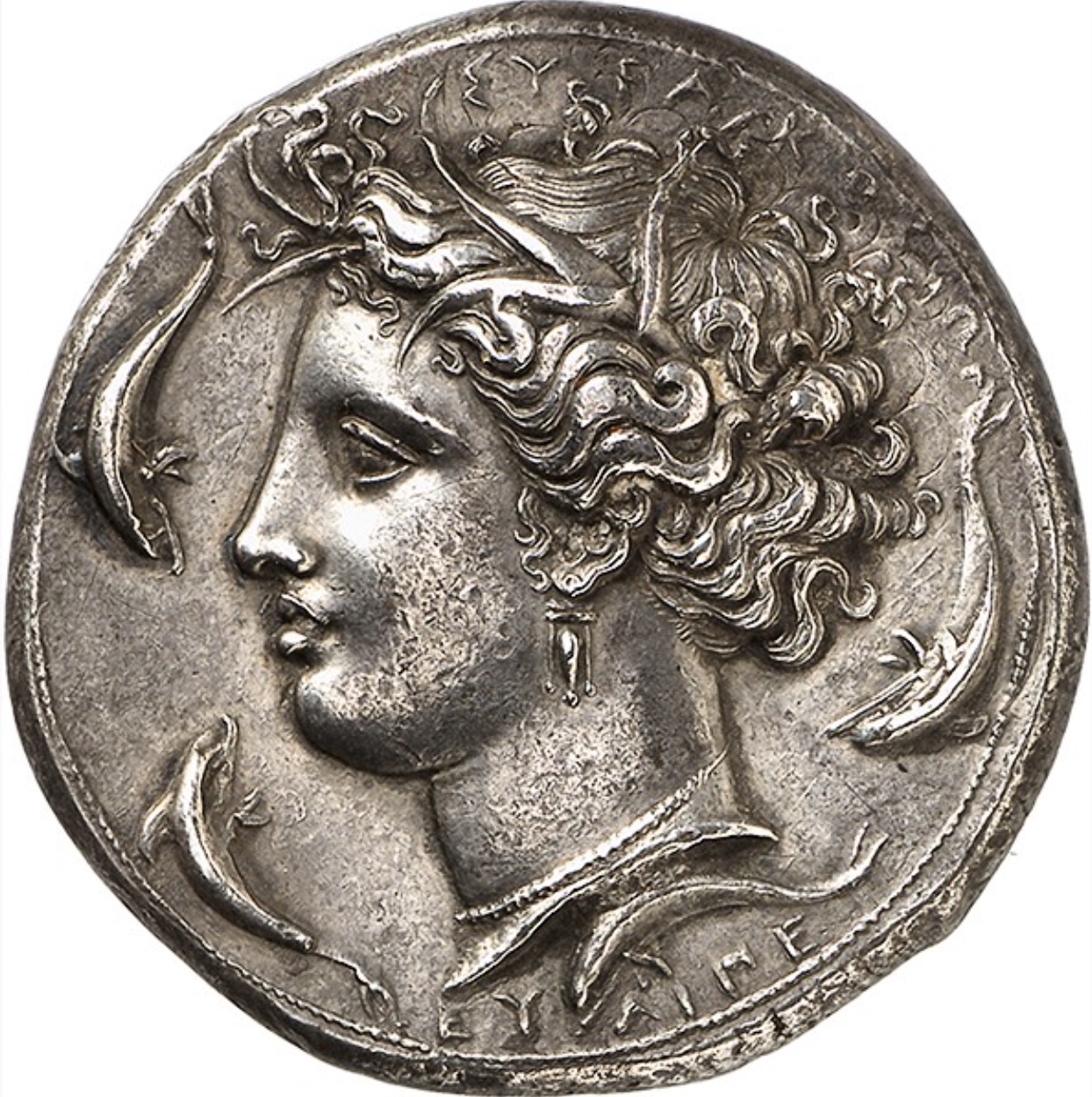There is a lot to love about the Greeks in Sicily: they were horse-crazy, temple-mad, fiercely competitive in all arenas, and produced some of my favorite tyrants and (not incidentally) my favorite coins. And this type is arguably the very finest of them all, showing the nereid (water nymph) Arethusa in delightful profile, surrounded by cavorting dolphins and wearing a crown of aquatic reeds from which her buoyant curls escape and float.

The honor given to this local nereid can be read in a variety of ways. On the one hand it is a reminder of difficulties of 8th century B.C. ‘colonizers’ faced when establishing a new polis in a foreign and desolate new environment. Fresh water was their life-blood and they found it in a convenient spring located in what would be the heart of the new city. Perhaps even more poignant was Arethusa’s mythological past: her appearance in Syracuse was a divinely arranged (complicated) transplantation from Arkadia, and legend had it that a floating cup deposited in her Sicilian spring would pop up in the Peloponnesian one – a persistent centuries long impulse to keep ties with the ‘motherland’.
The great flowering of virtuoso die engravers, of which this coin is a part, came at a politically turbulent time politically in the last decade of the 5th century B.C. The Peloponnesian war that gripped Greece touched upon Sicilian shores, but it was Carthaginian advances and internal strife that bolstered the power of Sicilian tyrants – princely figures with budgets and egos to match – and likely provided a driving force behind technological breakthroughs and such extraordinary coinage.
Syracuse was the longest lasting and by this point the most powerful of the Sicilian cities (remaining so long enough to seriously annoy the Romans a few centuries later). Their original life sustaining spring and mythological protectress, Arethusa, continued to be honored and emblazoned gorgeously to circulate to this day.




